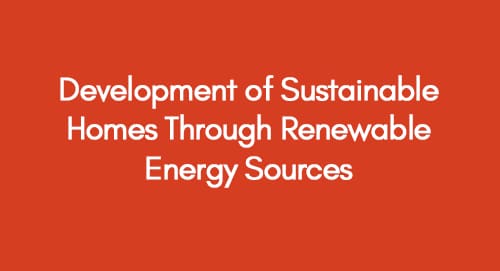
Flood risk and flood defense management in times of climate change. How flooding in the UK affect the Economy?
February 27, 2021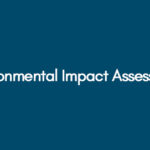
Environmental Impact Assessment
February 27, 2021Discover how homes are becoming eco-friendly using renewable energy sources. Exploring the creation of sustainable houses through renewable energy.
The following text comprises the introduction of the study.
Chapter – 1; Introduction
Sustainable development can be described as a process of ‘architectural development’ which can be considered to accommodate the diversified requirements of today’s modern era, in a highly efficient and environmentally friendly way. This methodology considers the fact that through the sustainability of natural systems, resources and the environment, our future generation will have access to the resources of this world and we might be able to maintain the natural balance of the planet we live in.
Gaining Sustainability in the Construction Industry
There is an increasing agreement among humans today that the decisions made by them are going to influence other individuals and their environment. Although, indeed, these decisions may not have a sudden effect/impact, there is a growing concern that in the long run, everything is going to contribute its share and have a powerful impact on the world we inhabit (He and Zhang, 2011).
Infrastructure lies at the heart of the economy. The construction around us has deeply influenced our daily life. Regardless of how it consumes natural assets suggests that it is liable for a considerable proportion of the critical matter of local and global environmental change (Miyazawa, 2012). Humans are unsustainable in using natural assets for building new infrastructure and using fabricated structures. The toxin levels that are emitted in the processes of construction are additionally a disturbing factor. In this way, there is a requirement for the construction business to embrace more sustainable designs for homes/buildings and development methods.
The objective of sustainable architecture is to boost the advancement of structures that satisfy the user needs, help the economy and have a neutralizing effect on the environment, as shown in the figure below in terms of four major aspects;

Figure 1: Sustainable Development Model (source: created using MS Office)
Therefore, it is important to highlight the significance of sustainable models and understand how individuals at every level can contribute positively at economic, social, cultural and ecological platforms. But how does this model work? To answer this question, one has to look deep into the operation of this model in detail, which is the primary aim of this report.
The terms sustainable building and green building are frequently taken to have the same significance, yet there is a contrast. Green buildings have a lower consumption of energy and therefore discharge lower volumes of CO2. Sustainable buildings are the ones which are efficient in energy, as well as which are fabricated to the point of improved efficiency, quality and affordability in the long run.
These structures conceivably help in increasing comfort and quality of life at each phase of their life cycle, while expanding the monetary sustainability of the venture and decreasing the harmful environmental effects. Structures which are merged with sustainable designs and development hence minimize the utilization of raw materials, energy, water, and different resources over their whole life cycle (Brito, 2012).
Recent research and development works and studies on sustainable homes and architecture have presented enormous business opportunities as well as challenges for today’s developers, engineers and architects. Major cities/towns are being developed rapidly throughout the globe, with much of the work being completed in the construction of housing societies.
This has established considerable pressure on the efficient utilisation of energy and material resources for the construction of such sustainable, energy-efficient homes (Mell, 2007a). The primary influential parameters that are directly associated with the subject of this research are as follows;
- Prudent utilization of resources for architectural developments
- Utilization of renewable, recyclable, economical and durable materials
- Optimization of energy use, consideration of alternative energy production and energy conservation
- Environmental friendly design for the development of homes, green infrastructure, and
- Introduction of smart and intelligent building technology
Research Aim
The research aims of this paper are as follows;
- Understand the concept of sustainable architecture, how this concept can be used for the development of homes, and how the utilization of renewable and environmentally friendly resources can prove to be productive for such developments
- Develop an understanding and show how sustainable developments may impact economic, social and environmental factors
- Present and analyze the benefits of sustainable homes
Research Objectives
The objectives of the research to be conducted are as follows;
- Identify the reasons why sustainable architecture is an absolute necessity in the developing world
- Identify methods of how the subject architecture can influence various parameters involved in the construction of homes
- Identify incorporating technologies such as ‘building engineering’ and ‘green infrastructure’. Showcase how the use latest technological advancements such as CHP systems can be effectively utilized in the development of sustainable homes.
- Present data and outline how the use of smart, renewable and recyclable materials can be used for the construction of sustainable homes. Establish the selection criteria, develop a case study, and show how such resources can used to produce productive results (such case of steel against concrete for structural frames)
- Present the technology integration methodologies for the sustainable development of homes
- Finally, proposes the development of a sustainable home in terms of a case study
The rationale of this study involves various parameters of the construction industry, including an adaptation of the concept of green infrastructure, effective spatial-planning preparation of layout, sustainable design developments, smart use of materials, energy conservation, technology utilization and various other concepts. These methods will then be applied in the form of a case study to showcase the procedures which can be adopted for the successful implementation of these parameters. The learning/outcome of this specific research will be provided in the form of conclusive remarks in the latest chapter of this paper.
Chapter – 2; Literature Review
The research conducted in the last many years has emphasized the importance of smart construction techniques. The development of sustainable infrastructure of homes, buildings, towers, landscapes etc ensures that the resources/materials are utilized through an engineered platform which puts much consideration on the basic design parameters such as; energy efficiency, sustainability, durability, and productivity (Guy and Farmer, 2001).
In relevance to the dissertation topic of this paper, it is important to outline the actual significance of the development of sustainable homes concerning environmental impacts, economic and social impacts, lay the background of widespread sustainable building development and understand why the world has seen a considerable driving force towards adaptation of this methodology. All these concepts have been briefly presented in this chapter by reviewing the relevant literature and analyzing the results produced in recent R&D.
Sustainable Developments; Background Review
Different research works, case studies and development works have been conducted by various research groups around the globe, and the results demonstrate that the stakeholders of the architectural business in the UK have perceived the imperativeness of developments in sustainable buildings.
Yet the real count of sustainably planned buildings in the country still can expand; which is because many construction organizations are yet to extensively execute the best practices associated with sustainable developments. The study directed by the WWF in a joint effort with Insight Investment delivered the following results;
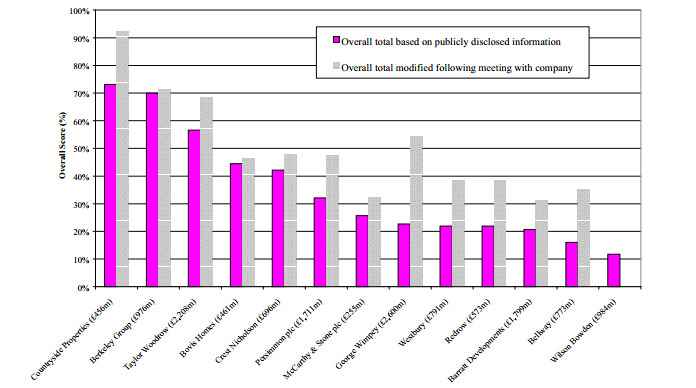
Figure 2: Sustainability analyses of major companies in the UK (Source: United Nations, 2002)
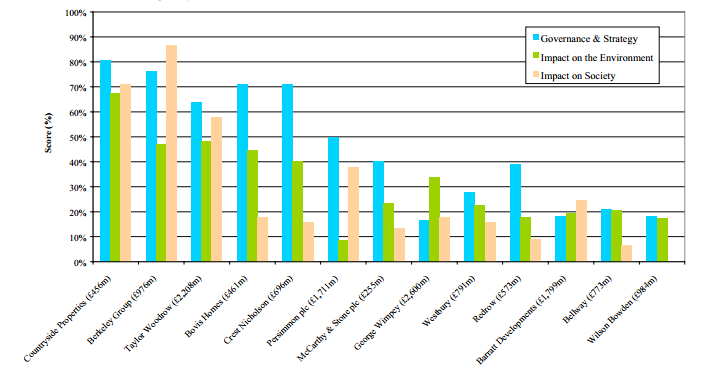
Figure 3: Sustainability attributes (Source: United Nations, 2002)
The overall results demonstrate the extent to which the organizations have reacted to the need for sustainable working practices. The study further pointed out that enhanced governance systems can have an immediate effect on society and the environment.
Analyzing these results reveals that the UK construction industry can enhance sustainable construction processes, as a general sustainability score of 35 to 47 per cent was attained. This can be attributed to different reasons, and some of them have been exhibited as underneath.
- Lack of Disclosure of Sustainability Information
This is thought to be the basic impediment to the widespread popularity of sustainable construction practices. Research presented by Davies et al. (2006) and the Countryside Agency (2006) recommended that spreading the information in the field of sustainable architecture through strategic planning and multi-functionality could help resolve these issues.
Literature reviews and analysis further show that training about the guidelines and plans for sustainable housing structures is an extremely important factor (Miyazawa, 2012; Blackman and Thackray, 2007; Mell, 2009).
Hence it can be reasoned that there is a necessity to educate and instruct the building specialists as well as the people involved in this field, generally about what sustainable outlines are and why we ought to strive for them.
There is a need to have a centre of excellence to encourage the applications of sustainable architecture and practices, and therefore the Royal Academy of Engineering in 2012 suggested that a centre of excellence would work as a knowledge body, to provide training and education to the stakeholders of this industry.
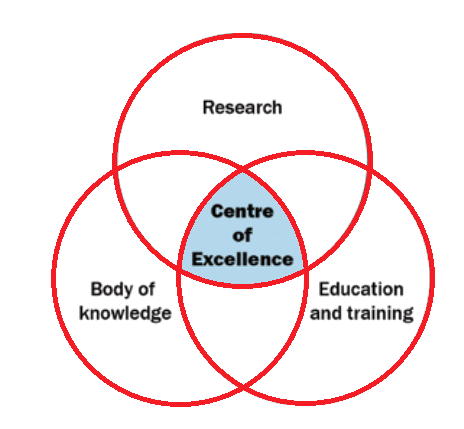
Figure 4: the concept of the Centre of Excellence (Source: MS Office)
2. Economic Factors
The expense of sustainable housing designs can additionally obstruct the broad usage of sustainable techniques. A common thought is that general users would not request sustainable practices unless the techniques spare them the expense of construction. It has frequently been seen that the true costs of building a sustainable building are not as high as one may anticipate them to be, as demonstrated by the study led by the Energy Efficiency Best Practice Program, shown in Figure 5 (EEBPP, 1999).
Another factor which could deter the potential development of sustainable designs/activities is that the people who are in the position to put resources into sustainable buildings are often not in a position to benefit from the savings later. This could be valid for real estate investors.
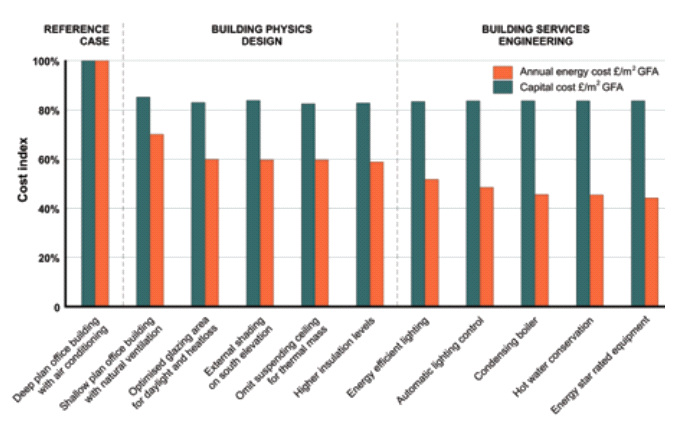
Figure 5: the cost-saving potential (capital as well as operational) during different stages of the building design/development (Source: EEBPP, 1999)
- Subcontractors Lacking Technical Understanding
Green houses are more often the result of an integrated configuration strategy which is prepared through a designated design and development methodology. Sustainable house contemplations generally require to be incorporated into the planning and design procedure at an early phase of the construction venture. Subsequently, it is the designers, owners and developers who can have the most say in what kinds of sustainable equipment/parts are included in the building plans.
Any lack of interest, correspondence and necessary training can also adversely affect the growth of sustainable practices in any project. The concept of a "green group" is generally that all stakeholders, subcontractors, future occupants of the house and the support staff be informed about the idea at an early stage and taught about the project aims so everyone grasps, helps, and feels to be a part of the project.
- Availability of Green Materials
New products are being produced through design and research is being carried out in different parts of the world. General adaptation and importance of these materials must be promoted to guarantee that these effective materials are being used in the construction industry. The fluctuating degrees of awareness about what products are available and where they can be found can be determined and enhanced through awareness and marketing projects.
The factual analyses of various literature reviews/case studies provide conclusive evidence that sustainability consideration in any architectural practice has to be prioritized, to ensure growth in all 4 aspects of the sustainability model of Figure 1. Summarized form of findings from further literature analyses on environmental as well as economic and social impacts have been detailed in the following section.
Environmental Impact
Building structures exhaust a large amount of the natural resources which consequently generates a significant impact on the environment. These ecological factors are a major driving factor for the sustainable architecture. Structures have a certain measure of 'stored' energy depending on the material used, for instance, steel, glass, concrete and other materials.
The fabrication of these materials expends many of the non-renewable resources and this subsequently hurts the environment. Given the limited lifetime of these structures, all the buildings are eventually demolished before new ones are built, which results in a chain of adverse impacts on the environment. Building operations further add to significant levels of environmental contamination, which cannot be ignored (Beatley, 2000).
The fundamental objective of sustainable architecture is to work towards diverse environmental protection activities and to develop structures with reduced environmental concerns (TEP, 2005). A few environmental benefits of utilization of this development are listed below;
- Reduction of air contamination. This incorporates reduced emanation of SO2, NOx, mercury, and other heavy metals and particulate matter from the structures.
- A lower volume of CO2 in the atmosphere brings about a reduction in global warming. This is one of the greatest worldwide concerns and a central point behind the introduction of sustainable architecture.
- Changes in the climate are being prevented through lower CO2
- Less damage to nature, as there is a decrease in demand for raw materials, for instance wood. This is on account of easily renewable and recyclable materials being required for sustainable architecture. Formerly, there was large-scale deforestation, as a lot of timber was required.
The list of the benefits can be further extended for a variety of benefits concerning enhanced / efficient energy consumption, increased health and safety, implementation of mitigation measures, effective resource planning and protection of natural habitat.
Economic and Social Impacts
Accommodating human demands while maintaining the balance of planet Earth, and securing the world's diminishing natural resources is a global test. It is hard to place exact financial values on sustainable buildings and their improvement; however, organizations must help the case for sustained financing.
Even though there are solid proofs which highlight the financial potential of sustainable architecture and social sustainability, it is not easy to persuade investors/stakeholders to invest in readily available sustainable techniques to gain value-added benefits.
To show the net financial benefit of utilizing sustainable homes/structures, an arrangement of studies have been conducted where monetary evaluation has been accomplished, for example; countryside properties environmental, ethical and social report of the year 2002.
These findings propose that sustainable architecture can surely have a positive effect on local and regional financial position. New jobs, business advancements and progressive internal financing are a few of the considerable benefits of sustainable architecture procedures being implemented (Loe, 2000).
Development costs for sustainable architecture are mostly discovered to be lower. This is because the materials utilized are by and large recycled and henceforth their expenses are lower. Moreover, there is a certain lack of determination about the long-run economic effects of sustainable advancement. Long-term assessments of various financial effects have been initiated, however, these simulations are still in their early stages, and influential results may be achieved from these recent developments in coming years.
Impact of the Latest Technological Advancements in Sustainable Development
A couple of models hint that sustainable advancement could incite long-run improvement in the global GDP as compared to how things are at present. A case of this could be a higher financing in green energy generation in green homes which will hopefully bring about further innovative concepts (Miruna Dudau, 2011).
Sustainable infrastructure has numerous social advantages which specifically benefit the local groups of people. The most significant one is the advancement of physical health through less toxic materials being utilized as a part of the development and better quality of air resulting from lesser unhealthy emissions from houses and the surrounding environment (Duhl, 2005).
Because of sustainable plans, the general population can save cash flows which were initially used on the additional measures of heating expenses, for instance. With less monetary load, the residents are provided with the opportunity to socialize and create a better living environment, henceforth the society is overall benefited.
Sustainable advancement and shifting towards a green economy can motivate further investigations of environmental costs. Law enforcement agencies have been working towards setting the rules for business divisions that are involved in financing, especially in areas that are valuable for the environment. An example could be lower taxes on purchasing vehicles that are fuel-effective and solar-powered energy systems.
This will also have social effects; the overall population will be encouraged to purchase such innovative tools/equipment and help the environment at the same time. It is a well-known fact that the present arrangement of government can help to achieve sustainable development targets, details of which have been given below
Role of the Government
Since we have established the fact that sustainability enhancement is an absolute necessity, it is important now to understand what the role of the government is and how the government has planned to overcome the obstacles in this respect. UK's Climate Change Act 2008 requires the architectural industry to ensure a reduction in the emission of greenhouse gases to a certain number/level by the year 2050.
This proposed reduction has been targeted to be less than 80% of 1990 levels. The Carbon Reduction Commitment Energy Efficiency Scheme (CRC) obliges the relevant organizations to submit yearly emission reports. If the emission amount is larger than a specified limit, the organization will need to pay a fine. So the companies are driven to reduce their emission amounts and hence their energy consumption due to this CRC.
The Energy Act 2011 is another law that states that by April 2018, leasing any private or business premises which have not demonstrated to achieve the required minimum standard energy efficiency will be against the law.
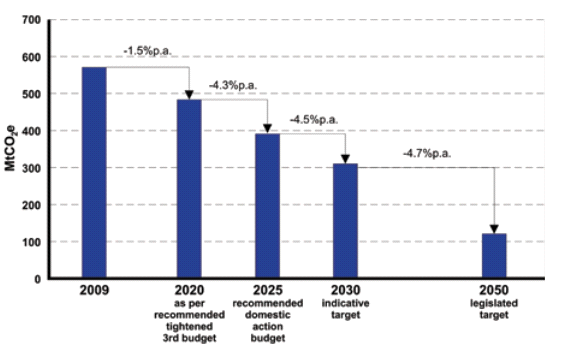
Figure 6: estimated reduction of the rate of emissions for greenhouse gases; 2009 - 2050 (CCC, 2010)
Figure 6 shows that there is a need to reduce greenhouse gas emissions over the next few decades so that the requirements set by the UK regulatory acts (CCC, 2010) can be met.
Therefore, there is now active participation from industries in developing methods to shift the technology being used to greater efficiency. Some of the techniques available to achieve these targets are discussed in detail in Chapters 3 & 4 of this paper. It is important to note that apart from the legislation changes, other influential economic, environmental and social impacts, as presented previously, have also played an important role in the sustainable development
It is the government's role to guarantee that problems, as identified in the previous section are resolved and that a comprehensive strategy is executed to guarantee the widespread use of green materials and sustainable practices.
The authorities must urge the influential groups to make decisions in light of concern towards the health, safety and welfare of the general public. This might be attained through an administrative methodology of managing certain public acts (denying and obliging certain activities) or a non-administrative methodology (giving certain motivations to the individuals or simply encouraging certain public acts).
Henceforth, it could be inferred that the administration must get involved where private exercises are undermining the benefits to the public. Practically implementing smart engineering designs, utilization of sustainable materials, presentation of new conceptual techniques and coordinating the utilization of energy which delivers lesser measures of carbon discharges must be the essential goals of the strategy of the government to sustain the environment.
The comprehensive literature review conducted in this report demonstrated that sustainable development is undoubtedly beneficial in various aspects, such as environmentally, economically and socially. It results in better performance of structures and enhances efficiency in the design. Moreover, government agencies are also working keenly on the implementation of sustainable practices.
Therefore, it is important to further investigate the methodology which can be utilized to practically make the designs sustainable. As the topic of this report suggests, the research of this paper is directed towards the development of sustainable homes while considering energy-efficient systems and renewable energy sources. The following chapter sheds light on these key parameters.
The following chapter is related to the methodology of the study.
Chapter – 3; Methodology
The fact that sustainable infrastructure is a necessity was established from the literature reviews. But the question remains how these methods can be practically adopted? To answer this question, one has to analyze the effectiveness of various available technologies, and eventually develop an understanding of how they work. A secondary data collection method/strategy is used for this research, which has been attained from different research articles, case studies and books completed in the last many years.
Analysis of the results produced in research articles and studies reveals that there is an immense potential for further enhancements in the field of sustainable development of homes. Economical as well energy analyses additionally demonstrate that any design which fundamentally utilizes advanced techniques in construction methods and the use of renewable energy resources can prove to be a viable and gainful practice (Kambites and Owen, 2007).
There are open doors in the engineering fields in different industries that can largely benefit from the latest practices and technologies. It must be further noted that innovations which have turned out to be useful are yet to be embraced at a much higher scale because of a lack of procurement, and education and due to the possible resistance to adapting to change.
Various construction techniques are available to aid the structural design in becoming environmentally friendly, energy efficient, and thereby being sustainable. The strategy adopted in this research is to carry out an Investigation of these basic techniques which can be applied to construct a sustainable home.
These methods include the use of renewable energy resources and materials, environmental designs of the homes, use of state-of-the-art technologies and the precautions which the builders and in some cases, residents can adopt to ensure enhanced sustainability of homes. These methods will then be applied in a case study in the later chapter of this paper
Use of Renewable and Recyclable Materials
The decision on building/house material is a standout among the most critical parts of building development. The selection of the material choice must be based upon the potential of the material to be reused/re-utilized and its effect on nature.
The selection of raw materials relies upon elements which are thought to be important from the starting point, from the material's extraction to its processing, transportation and bundling, and lastly to its utilization and post-utilization (or reuse) as a finished product. Only those materials which can meet the green standards in these individual stages must be utilized in sustainable structural planning designs (Bennets et al, 2002).
The usage of healthy and safe building materials brings about better indoor air quality for the occupants of the house. Most volatile organic compounds (VOCs) have a very high vapour pressure when released into the air, especially indoors. Thus the utilization of such materials can have unsafe results for the health of the inhabitants.
Their emission sources incorporate a large mixture of items including building materials, paints, decorations, and cleaning products. Numerous markers have begun creating low and VOC-free materials and items. The use of materials such as polyvinyl chloride (PVC) must be avoided/minimized since its fabrication as well as disposal process have been reported to produce adverse effects on the environment and public health (Thormark, 2006).
There is a vast range of data which provides definite answers to which materials have turned out to be the most nature-friendly in the form of comparison with different materials. The majority of this data is promptly accessible, so the sustainable architecture could consolidate the utilization of the materials as a feature of the design. Keeping in mind the end goal to further investigate the effect and imperativeness of material selection on sustainability, an example has been incorporated in this paper as follows;
An Example Case Study: Steel Frames VS Other Materials
Steel frames are by and large the most well-known choice in making frames of sustainable structures. Steel has different favourable factors compared to other types of building materials. Cement and wood are other basic building materials accessible in the UK. The cost of arranging and making the whole steel outline of a house, in reality, is almost the same as using timber frames. It is a proven, less expensive option if it is being used to develop housing or multi-story buildings (EEF UK Steel, 2013).
Steel has the superiority of being an inorganic material which does not break, curve, bend or split over the long run. Also, steel does not experience the ill effects of being demolished by pests such as wood, for example, termites or parasites. Thereby it is unanimously agreed that steel is one of the strongest construction materials available in the UK.
Besides, there is the point of interest of these steel structures being equipped for adapting to any future extension proposed for the steel structure. The moment that there are any expansions needed; all the manufacturer needs to do is to incorporate extra steel frames and sheets to expand the wall space. Steel structures can withstand seismic tremors, snowfalls, strong winds and various other kinds of natural calamities.
Structural steel likewise has a much better strength-to-weight ratio contrasted with other building materials. The outcome of this is a lighter building and consequently, it needs a less deep and expensive foundation (Anderson and Carter, 2009).
Steel frames have a good aesthetic appeal and their development is quick and there is a very small development site waste. To some degree, fast development is not achievable with cement and timber.
In addition, steel structures can benefit mortgage holders and advancement experts themselves, as using steel frames can save a huge amount of trees and nature's space. Steel is a completely recyclable material, without any decrease in its value, whereas it is not true for timbers which are a rapidly diminishing resource. A good home design nowadays obliges it to be of high strength, cost-effective, easy to make and ecologically friendly.
Nearly 86 per cent of the structural steel frameworks utilized right now within the UK, according to Anderson and Carter (2009), are reused and recycled to create new steel products after the completion of their life cycle, and an additional 13 per cent is used again in their current state.
As per a survey led by Tata Steel Europe Ltd, studies have demonstrated that steel holds the best piece of the pie in the development of multi-story structures in the UK. The study results are shown as underneath:

Figure 7: Comparison of market share (Source: Corus Construction, 2014)
The results demonstrate that the utilization of steel in the construction business has seen an increase over the last couple of decades, in contrast with concrete. This examination was regarding material choice mostly for multi-storey structures and it strengthens the argument that the construction industry is shifting towards more efficient and green materials. The same method of materials selection will be applied for the construction of an example sustainable home.
Use Renewable Energy Sources
The use of renewable energy sources for providing power to homes and buildings has been one of the most important research topics in the last many decades. Various technologies have evolved and some of the widely used technologies are given below;
Photovoltaic (Solar Cell) Systems
Solar cells have the mechanism to convert sunlight into electricity. Semiconducting materials are utilized as a part of machine chips to produce these solar cells.
The basic mechanism is that the sunlight is absorbed by the material in the solar cell and the energy in sunlight knocks out electrons in the material's atoms. These electrons then flow through the connected circuitry as electric current. This process of changing light energy (photons) to electric energy (voltage) is known as the photovoltaic effect (PV).
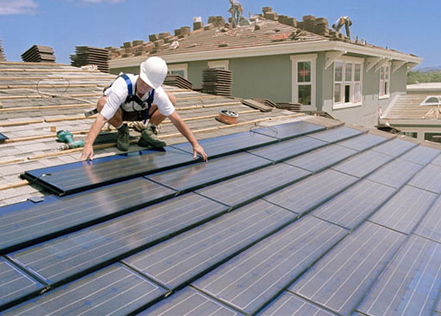
Photovoltaic System (Source: SunGreen Systems)
Although a PV system produces electricity when sunlight is incident on it, some other parts are also required to effectively conduct, convert, control, distribute, and store the electricity produced by the system.
Depending on the system's functional requirements, the major additional components that are required may include a DC-AC power inverter, battery and its controller, auxiliary sources of energy and the related electrical load (electric appliances).
Batteries are usually used in PV systems for storing the energy the system produces during the day, and to supply it to the appliance when energy conversion from sunlight is not taking place, for example during the night and on a cloudy day. Likewise, the battery controller protects the battery from overcharging and over-discharging.
Impact of Using Sustainable Photovoltaic Technology Development
Advantages of PV Systems; Solar energy is a renewable resource that can be exploited as much as we want and it will not run out, unlike fossil fuels. Some of the advantages are as follows:
- Sustainable energy source
- Environmentally friendly since there are no CO2 emissions
- Simple additional equipment can allow for water heating
- Skylights reduce the energy expended to light the house during the day
- Little maintenance is required
- Reliable source of electricity
- No noise pollution
- Lower taxes and subsidies from the government
- Can be accessed in remote areas.
Disadvantages of PV Systems; However, there are certain disadvantages to the use of PV systems.
- The high initial capital required
- Batteries are required to store power when sunlight is available (limited capacity)
- Not all houses can utilize solar power due to limited sunlight, e.g. multiple-storey flats
- Low efficiency of energy conversion at present.
Wind Energy
Wind energy has been in use by humans for a considerable length of time. It was used to drive sailing ships across the seas. A single windmill can handle the energy required by the irrigation system, water pumping, electric lights and other energy needs of a family. At present, however, windmills are being used to produce energy, mostly for industries only. Many wind turbines can store a large amount of energy at one time and then feed it to the power grid.
Wind power is a renewable energy source. It decreases a country's dependence on others for oil and gas supply. It doesn't result in any air contamination and has made a large number of employments in the last few decades. Technological advances have cut down the expense needed to set up a wind power plant and once set up; the electricity is produced almost negligible cost 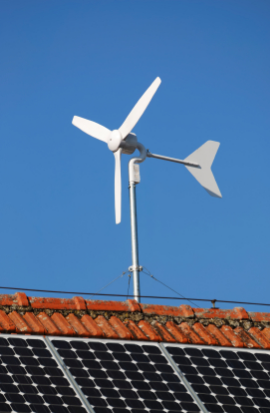
Wind Energy (source: Manitoba Eco-Network)
Wind energy can only be utilized within zones which encounter high winds. This implies that it cannot serve as an energy source in any part of the Earth. These plants sometimes produce loud noise so they cannot be set up within residential areas. These two disadvantages have made the utilization of wind energy to only specific regions.
Hydroelectric Energy
Hydroelectric power stations are installed to convert the kinetic energy of moving water into mechanical energy which is engineered as an input to the turbines. In the next phase, the moving turbines change this mechanical energy into electrical energy using generators. Dams around the globe have been set up only for this reason. Hydro-power is the biggest source of renewable energy on the planet.
There are many types of hydropower plants. The choice of hydro-power plant relies on the amount of volume and the degree of water flow. Hydro-power is renewable, predictable, and a constant energy source. They are environmentally friendly since they produce no greenhouse gases. On the other hand, they may have some disadvantages. Hydro-power plants may hurt aquatic life, need a huge capital to be developed, decrease the flow of water, which may harm the farming process, and may cause a disaster if they break down.
Reviewing the various renewable energy sources and systems, it can be concluded that any of these methods or their combination can be used to supply energy to homes. The selection criteria for these resources are presented in detail in the next chapter of the paper, however, it can be stated at this point that through the availability of sufficient resources, many of the alternate energy supply systems can utilized for the enhancement of the sustainability of any home. Successful implementation of this strategy may not be the only solution in terms of sustainability, as energy optimization is another excellent method through which the system performance can be enhanced.
Energy Optimization
While moving towards more clean ways to create energy, we can make huge progressions in utilizing the produced energy more efficiently. We can make various changes to minimize energy consumption and counter the global warming effect. Over the recent two decades, energy efficiency has enhanced at a rate quicker than it has been adopted.
There are many ways in which the energy consumption of a house can be reduced. One of the compelling strategies incorporates passive heating and cooling, and utilizing the natural sunlight as the primary source of lighting in the building, of course during the day timings. Consideration of high energy efficiency is most vital when designing the energy supply systems which are to be introduced for the house. The most effective frameworks must be chosen that meet the required capacity.
Various equipment, for example, fluorescent and LED lights, have been developed to meet the standards of higher energy efficiency. In numerous places, buildings and lifestyles, many processes waste huge quantities of energy. Supplanting standard fluorescent lighting with efficient fluorescent lighting can spare something like 80 kWh of energy for every installation every year. This translates into a reduction in greenhouse gas emissions of 17 kg for every installation per annum. This method has also been named as "Retrofit" of residential/business buildings.
On a major scale, one illustration of the use of such energy optimization could be cited here is the Combined Heat and Power systems, also known as the CHP system.
CHP System; an Innovative Technology Development Example
The CHP framework has opened many doors for sustainable development as it has been intended to increase the efficiency of electricity production and heating systems. This engineering accomplishment uses regionally accessible resources as fuel for energy production, for example, biomass and waste, which additionally decreases transportation costs and further diminishes CO2 emissions (Kelly and Pollitt, 2010).
The CHP system can use the low-grade heat created during the system's operation. Uses for this low-grade heat include steam generation, water and space heating. This unique quality allows for the efficiency of the CHP system to be around 70%, which is respectably higher as compared to 40% of other systems which do not make use of low-grade heat.
Regardless of this incredible plus point, the percentage of CHP out of the total power generation of the UK is just 6%. This is a major reason behind the UK being viewed as inefficient in extracting useful energy from primary energy sources. It is worth noting that Denmark, which has been ranked as the second most energy-efficient country in the world, derives 50% of its electricity from CHP plants.
The CHP system offers many opportunities for sustainable development. We have already seen some of how CHP systems increase energy efficiency. We can now see other benefits that CHP systems have to offer.
Since local renewable resources are being used to generate heat and electricity, such as waste and biomass, transport distances are drastically minimized and so are the resulting CO2 emissions. There are other benefits to the local community as well. Jobs relating to the management and maintenance of local power stations are created which leads to the growth of local employment and economic rates.
There is also the benefit of being able to choose the most affordable and locally available fuel since any fuel can be used for the production of hot water required by the district heating system. Hence, increasingly expensive and non-reliable fossil fuel supplies can be provided in an alternative form in areas with any other type of fuel available (He and Zhang, 2011).
Other economic benefits include minimization of transmission and distribution losses. These losses (which accounted for around 8% of total power consumption in the UK) can be avoided because CHP plants are located close to their area of demand. Using CHP systems instead of conventional natural gas boilers can offer greater efficiency and cost savings as regards the operation, cleaning and maintenance of the heating systems (Kelly and Pollitt, 2010).
Whenever there is a wide distribution network of power, there occur power system anomalies. The use of the CHP system decentralizes the power distribution and so the quality of the transmitted power can be effectively improved. This decreases power losses and improves the life of the equipment. Decentralized CHP-DH networks also allow for to avoidance development of large, centralized plants which are capital-intensive. Also, there is no need for constructing new natural gas storage facilities and upgrading the infrastructure of the national grid power.
Moreover, it has been demonstrated by DECC (2009) that CHP-DH systems have some of the highest technically achievable CO2 savings and some of the lowest costs per ton of CO2 spared when analyzed against other contending technologies.
Taking everything into account, the following are the benefits offered by the heat distribution systems that utilize CHP:
- Expanded energy productivity
- Minimization of contamination
- Lower fossil fuel utilization
- Expanded livelihood and other budgetary profits for the people
- A great chance to utilize nearby renewable energy resources
- More intelligent power balancing of the system
- The most economical and largest amount of CO2 saving when contrasted with other contending innovations.
Other Techniques
Considering the domestic scale, if a family can satisfy their requirements using a small-sized refrigerator, they should not purchase one larger than their requirements, even when they can bear the extra cost without any problem. A good measure of an appliance's efficiency is its Energy Star rating. An alternate method that can turn out to be valuable for efficient energy use is supplanting old machines with the latest, more energy-efficient models (Smith, 2001).
Acquiring energy and water-efficient systems can likewise help in enhancing the energy effectiveness of the whole building. Water use ought to additionally be minimized inside the building, and this might be guaranteed through different water-efficient gadgets in the frameworks where water input is needed. Rainwater catchments and Graywater accumulation are two procedures to supplement the water supply of a building. Both of these techniques are amazingly valuable in enhancing the water productivity of the building.
An exceptionally successful method to reduce energy loss from different appliances which are not being used is by introducing an automated power supply system. This checks if the appliance is being used or not and subsequently turns on or turns off the energy supply to it. Solar-powered photovoltaic cells and little wind energy turbines are getting to be more accessible to users nowadays. These advances extraordinarily lessen the energy reliance on non-renewable assets like fossil fuels. Thereby, these methods help in making the structure more green and sustainable (Smith, 2001).
Environmentally Friendly Design and Green Infrastructure
House buildings must be designed with a specific focus on the comfort of residents. Therefore, methods which can be considered to provide comfort while ensuring a higher level of sustainability must be explored. The most generally used structural design features which can guarantee a sustainable home design are as follows:
Air tightness; An enclosed and air-tight structure of a house building ensures that the air loss is prevented. Various types of sealing are performed from the inside of the building to ensure air tightness, having the following advantages:
- A lower amount of carbon emissions
- Increased comfort through the prevention of cold spots and draughts
- Reduce heating bills
- Reduce outside noise
- Improve the lifespan of the building fabric
External insulation (EWI); External insulation (EWI) of the structure walls is vital for energy conservation, which is also considered to be a pivotal factor in the growing technology implementation of sustainability. This helps prevent heat loss from the structure and consequently saves on a large amount of heating costs and CO2 emissions (Mendler et al, 2000).
EWI systems have the following advantages:
- Reduces heat losses and thereby temperature regulations can be met
- Durable and long-lasting designs
- Removal of water vapour allowed by the breathable rock system
- Reduces CO2 emission
- Aesthetically pleasing as a wide range of colours and finishes are available
- Lowers the costs of maintenance
The two commonly used materials for external insulation are rock mineral wool and extended polystyrene. Since both of these have their unique features, the choice depends on where they have to be installed and the prevailing conditions.
Internal wall insulation; Cold roof, warm roof and internal wall insulation are the techniques for internal insulation of the walls. This gives the same advantages as the external insulation.
The front and back walls of the building, along with its side gable need internal insulation since heat is exchanged with the surroundings in these locations. Insulation on the walls can be installed mechanically or adhesively. The insulation material is made up of composite boards, which are made up of a vapour barrier and plasterboard.
Ground Source Heat Pumps; The heat inside the Earth, called geothermal energy, continually streams outward from its core and can give a valuable supplement to warming and cooling. Geothermal heat pumps, also known as GeoExchange, ground-source, earth-coupled, or water-source heat pumps, have been used since the late 1940s. They utilize the temperature of the earth, which remains fairly constant as the medium of exchange rather than exchanging with the air outside. This permits the framework to arrive at reasonably high efficiencies (300% to 600%) compared to the air-source heat pumps with efficiency of about 175% to 250%.
Like other types of heat pumps, ground source heat pumps can provide heating, and cooling, and optionally supply the house with heated water (if so equipped). A few models of geothermal heat pumps provide more comfort and savings of energy using two-speed compressors and variable fans. In comparison to air-source heat pumps, they are longer lasting, quiet, require little upkeep, and are less dependent on the outside air temperature.
Surprisingly, a large majority of the population thinks that they need to live over a hot spring, a geyser or some other powerful geothermal heat source to have the capacity to utilize this source. However, this is a long way from reality, and this natural resource can be used almost anywhere.
Other insulations; The pipes carrying hot water to the buildings are likewise secured by protecting material to avoid loss of heat and conserve energy. Many materials like glass wool, mineral wool, polyethene, rigid foam, cellular glass and others are accessible for pipe coating and insulating (Guy and Farmer, 2001).
There are also methods available to insulate doors and windows. Besides being energy efficient, they also provide good security. Double glazing of windows minimizes heat loss through them. The air or vacuum present between the two glass panes provides a poor conductor of heat and hence minimum heat escapes the windows only through radiation.
There are different types of vents and membranes available for roof ventilation and flooring. These provide minimum heat loss and energy consumption.
Considering the long-term benefits these products offer, they are not very expensive to install in buildings. The amount saved from the lower energy bills from installing these products equals out their price within a few years. Also, these products add to the building's value, and anybody purchasing a building would favour that one has a sustainable architectural design and features.
The research method/approach used in this paper has provided detailed information on how to develop a sustainable home in terms of fundamental sustainable practices, renewable energy sources utilization, and energy optimization. However, this approach only provided qualitative data. Quantitative research methods are not possible while considering all of the general aspects and parameters, as this requires detailed analyses of one or two specific parameters. The following chapter investigates the construction of sustainable homes by using all these aspects and analyzes the outcomes of their application.
Chapter – 4; Findings (Results and Discussion)
A case study has been prepared to present detailed information on how to construct a sustainable home.
Case study; Application of Sustainable Home Development
The practical and fundamental practices, as briefly outlined in the methodology chapter, have been included in the study completed in this Chapter.
There are numerous elements which comprise a building's sustainable architecture. Discussing all these segments at an elementary level is out of the scope of this paper; however, the significant perspectives of these elements have been covered. It is important to note that none of the elements if individually implemented can guarantee a sustainable outline; rather a synthesis of these elements would bring about a sustainable structure and the subsequent development of a sustainable house.
The development of a sustainable home or set of homes in the form of a housing scheme includes the completion of various engineering and management activities;
Table 1; Project Activities to be completed for the development of a sustainable home

When planning to construct sustainable homes, it is critically important to consider/assess the environmental impact of every activity tabulated above. Further to this, once the house is completed, the operational performance concerning energy and materials utilization also plays a vital role in determining the sustainability of the home.
To achieve the desired sustainability standards, layout planning and designing are considered of prime importance. The construction area coverage, in-cooperating good ventilation system, water/energy utilization, green coverage and many other parameters must all be detailed in the early stages of the plan. The use of smart materials during the construction phase also holds key importance in today’s world of advanced technologies.
The following provides detailed information on key sustainable practices which must be considered for the development of a reference sustainable home.
Sustainable Outline Plan and Material Selection
The floor layout plans of the house have to be proposed/prepared while considering the adaptability of the available space. To be well-suited for diverse clients, the size and openness of the rooms, living spaces and other partitions have to be outlined such that the present as well as future requirements of the residents are considered. This house is intended for lifetime versatility through attainment of the following features;
- Large toilet on the ground floor.
- Extensive space in the lounge, free for including a lift to a room on the first floor later on
- The living room on the ground floor might be divided to incorporate a room later on
- No doorsteps in the house
- Wide space (~7m wide, ~8.5 m long)
- The hallway is wide and open to make the ground floor available.
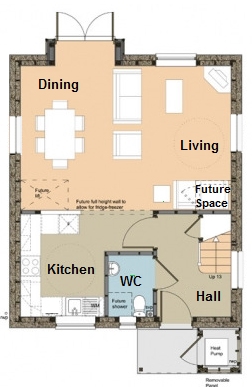
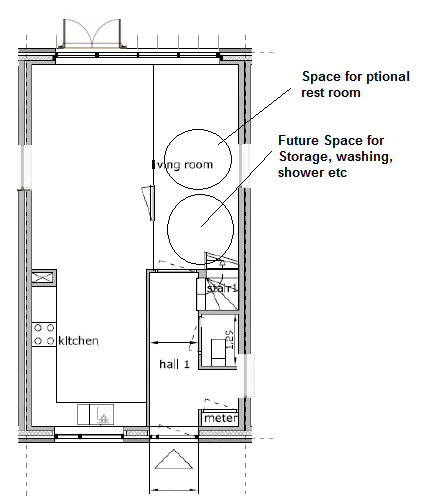
Figure 8: Layout Plan for an example Sustainable Home (Source: edited using MS Office/Paint)
As can be seen from the figure above, this house incorporates a large passageway which offers access to the ground floor and also the top floor. This entrance has been designed such that the ground floor as well as the top floor could be used as an independent studio house. The blue range is the toilet on the ground floor and could be stretched to a bathroom by adding storage space to it.
Additional spaces have been left open for an additional restroom, living room or other facilities. The CAD layout on the right side of Figure 8 is another option for the flexible design of the proposed house. The final design of course will be have to finalized and approved in consultation with all the stakeholders.
In the layout planning and designing of this house, an enhanced spatial arrangement, a safe passageway and an adaptable configuration have been incorporated with a specific end goal to increase the lifetime of the house. Safe ventilation openings have also been incorporated for both the passive/hybrid and the active concepts.
These measures will impact the expenses of the house. Through accessibility, and planning the measure of the valuable area will change; the internal walls area increases, and for safe ventilation openings, additional materials are required for the window outline.
Building materials have a significant impact on the overall sustainability of the house; primarily on the environment, embodied energy and health of residents. Compressive evaluation will be conducted and diagrams of primary utilized materials along with their general impact on the surroundings will be presented before the bills of quantities are approved.
The basis of the material selection criteria has already been discussed in the previous chapter, including a case study of stainless steel. The same methodology will be adopted to ensure the utilization of only the most sustainable materials for this house.
The fire-resistant gypsum wall partitions will be used for the internal partition of the house, enabling excessive user options for a diversified spatial plan. The gypsum partitions will be supported through stainless steel frames.
To understand the potential outcomes of applying sustainable energy advances, the related conditions at the building site will be examined. These conditions incorporate data about solar irradiation, wind velocity and accessibility, precipitation and geographical details. These data resources can then be specifically analyzed to see if it would be reasonable/viable to use certain technologies in the building.
Sustainable Thermal Comfort
Accomplishing thermal comfort levels inside the house (primary heating interest) is possible through both active and passive methods. Considering sustainable design, the need for higher indoor temperatures, as compared to outside, can be fulfilled in many ways, such as;
- By maintaining internal temperature of the building through appropriate air tightness and thermal insulation
- By storing external atmospheric heat during higher outdoor temperatures; long-term/short-term thermal storage.
- By utilizing external heat sources passively, such as heat from the earth, sun, waste etc.
- By heating the house using active sources of heat, such as utilization of renewable sources or conventional gas/electric heaters.
The most widely used heat distribution system for residential buildings is the high-temperature radiators, which are designed for a water supply temperature of 90 degrees C and a return temperature of 70 degrees C.

To achieve a comfortable temperature in the active concept, a low-temperature water distribution terminal heating system will be installed. The upper limit of heating capacity (W/m2) can be determined for every system type by taking the user floor range, for example, 100-125 m2 as a reference house, and the user requirements. This system is suitable for several low-energy heat generation frameworks, which is ideal for a sustainable house plan.
To accomplish a comfortable temperature in the passive concept, the focus will also be on building skin improvements to minimize the impacts of the outside environment. This infers expanding the thermal capacity of the materials used for construction and ensuring optimum thermal insulations.
Supply of fresh air and an appropriate exhaust system have to be accommodated to maintain a healthy environment in the house building. The indoor air ought to be kept free from contaminations, from inside and outside the building. According to the Environmental Protection Agency, the concentration of CO2 must be kept underneath 800 ppm (for a normal density of people) and outdoor concentration of CO2 of around 350 ppm.
Design considerations of ventilation frameworks are mostly dependent upon the energy usage for driving fans or preheating of ventilation air and the thermal comfort of the residents. The optimization of both parameters makes the ventilation in houses a complex task. The common design parameters are the draught, the measure of fresh air, the air quality and the noise generated by system operations or ventilation openings.
Different ventilation methods/techniques are available, which all have their pros and cons; however natural inlet with a mechanical exhaust system (hybrid or active) will be utilized for the proposed house. By utilization of mechanical exhaust, the ventilation stream will always be guaranteed.
Exhausts will be installed in the kitchen, restroom and toilets. Design considerations concerning the operation of the system such as user dependency, control and flow will be incorporated in the detailed design of the house. The system is expected to provide more secure airflow streams as compared to natural ventilation, along with a simple user control system a minimal duct sizes.
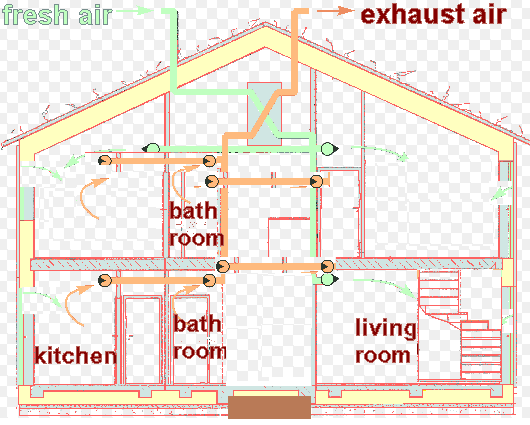
Figure 9: Natural inlet with mechanical exhaust system (Source: edited using MS Office/Paint)
Thermal comfort can be guaranteed via cautious design for the openings, whereas acoustic comfort will be attained by utilizing sound baffles in areas with high outside noise loads. To reduce any additional energy losses by infiltration streams, resources will be spent on increasing the air tightness of the buildings.
Sustainable Visual Comfort
To guarantee a healthy living environment, visual comfort specifications have to be considered as one of the primary aspects of house development. The outline might be impacted by ‘Daylight’ or ‘Artificial’ lighting. Natural lighting is favoured because of its expansive range of colours and the variations in intensity. From the perspective of energy efficiency, natural light is favoured over artificial lighting, because the house partitions can be naturally eliminated without any power requirements.
For both sources, the sizes of windows and glazing will be evaluated with a specific objective of accomplishing acceptable daylight factors and decreasing power use for artificial lighting. Therefore, an energy-proficient lighting system with control will be focused on the design of this house. Along with the maximum utilization of daylight, LED lights and motion sensors will be installed to reduce the energy consumption of lighting.
The type of windows will be selected with a primary focus on the transmission values, and shades will be fabricated to attain the desired sunlight levels while ensuring that overheating is avoided. The definite sizes and attribute decisions will take place during the design process.
Acoustic Comfort
To achieve a high acoustic comfort level inside the building, it is essential to install effective noise barriers and sound insulation, so that the noise level can be brought down to an acceptable level. Air sound insulation methods will be based on increasing the mass (as increasing the by a factor of 2 increases the insulation by +5 dB), using additional layers with air in the middle and increasing the cavities inside the structure.
These measures reduce the effectiveness of sound energy passing through the building. Additionally, the actual sound load on the outer side of the structure could be reduced through an engineered building shape. Balconies and well-organized fronts can lessen the effect of the noise load. It is important to note that openings in a structure, such as ventilation grills, cracks, or ductwork largely reduce the sound insulation of a certain structure. Measures to lessen contact sound are the uncoupling of installations from the structure, utilization of detached cavity walls, lowered ceilings and floating deck floors.
Sustainable Operational / Renewable Energy
An examination of sustainable energy innovations is carried out to make a comparison between various choices to create energy from renewable sources or proficiently utilize the energy. The consequences of the investigation will uncover the pros and cons of the choices available.
As specified above, site conditions are examined for the following available technologies;
- Solar energy, irradiation information and solar path
- Wind energy, wind directions, wind speed
- Geographical properties, temperature in the ground and type of soil
- Availability of biomass-based applications in the subject area
The breakdown of the energy utilization of the households reflects the main energy utilization for every energy source. In most cases, the energy used for space and water heating has the largest share in the total energy consumption. As indicated by an environmental assessment carried out by Nijenmanting and Senel in 2010, the space heating requirement of the house for one family is approximately evaluated to be 84 kWh/m2 (0.95 boiler efficiency, 125 m2), But if this value is reduced to 20 kWh/m2, the energy required for space heating would be lower than that of generating hot water. Therefore we must look forward to alternative and renewable energy resources which can provide environmentally free energy for the primary energy requirements of the house residents.
It is also important to note that the energy utilized by the appliances is the most important component for power utilization in most houses. Accordingly, appliances which are energy efficient will significantly lessen the power demand.
The CO2 discharge is associated with the utilization of electricity and natural gas. Evaluation of these energy resources helps in identifying which fuel causes more CO2 discharge and the impact they generate concerning greenhouse gas emissions. From the previous research and studies conducted, it was noted that utilizing electricity causes less CO2 emissions as compared to natural gas. Normal utilization of natural gas in the house produces almost 3 tones of CO2 emissions while this amount is 2 tones for electricity use, i.e. 1.5 times higher. This figure represents that minimizing natural gas utilization is comparatively more important than electricity utilization, as far as greenhouse gas discharges are concerned. However, it is worth noting that direct heating by natural gas is more efficient as compared to electricity and produces fewer gas emissions.
Solar irradiation is an important parameter for the outline of the house. Both the passive solar house design and the solar energy-related innovations are influenced by the solar properties of the area. The accessibility, direction and capability of the solar illumination are basic factors which must be considered before having to install the solar panels
As per the Photovoltaic Geographical Information System, yearly total/data of worldwide irradiation can be acquired. Besides the sun-based irradiation data, sun orientation diagrams help find out the direction of the building and its passive solar design. PV solar panels are commonly utilized and stand out amongst the most promising electricity supply technologies in buildings. PVs could be introduced in stand-alone or part of a grid design. In this study, it is taken that the panel is put on top of the building and is linked with the grid.
As has been a standout amongst the most promising sources of renewable energy, the likelihood of applying wind energy is contemplated. For that reason, normal wind speeds recorded in the area of interest will be investigated along with the wind directions. This study can likewise help to find out the position of the ventilation openings in the building to make utilization of the open air for natural ventilation.
The highly efficient natural gas-powered boilers will be installed for this house; condensing boilers are the most generally utilized heat generation systems for residential areas (Eijdems and Boerstra, 1999). The high-efficiency boiler in 107 of class might be utilized to fulfil heating needs in the house. The normal efficiency of this kind of boiler is approximately 90-97.5% (Senter Novem).
A heat pump takes heat from a source and supplies it to a sink at a higher temperature, as characterized by ASHRAE. Heat pumps are a proficient method for creating heat by utilizing natural gas or electricity to power the compressor. The most generally utilized heat pump sources are outdoor air, surface water, exhaust ventilation air and ground sources. Since the theoretical configuration does not have an accurate area characterized, surface water is not considered as a choice for the configuration of this house.
Micro-CHP frameworks are considered as a stand amongst the most productive approaches to change the energy in a primary fuel into electricity and other helpful energy such as heat for domestic hot tap water and space heating. When considering the savings of primary energy, the most energy-efficient generation method is the ground source water-to-water heat pump for space heating and the micro CHP unit for a combination of space heating and household hot water. Nonetheless, at present, accessible micro CHP units run on natural gas, which is based on fossil fuel.
Unlike electricity, natural gas can't be produced on the spot through renewable energy sources. Even though biogas is an alternative for future applications, considering the practices common nowadays, the ground source water-to-water heat pumps are the most suitable alternative for space heating. Moderately high primary energy utilization might be repaid by introducing solar thermal collectors on the top of the house. The solar thermal collector type will be chosen and focused on the expenses of the frameworks since the primary energy saved from both types is equivalent.
Since the active concept will involve installations to make up for the generally higher demand for thermal energy, horizontal ground sources with a constrained ground region (considering a central location in the town) might be lacking which will prompt the utilization of the vertical ground heat exchangers. As discussed already, the utilization of solar thermal collectors and PV is compelling to decrease the primary energy utilization.
All these methods, considerations, analyses and the exertions fabricate a sustainable built environment. As a consequence of the investigation, the following methodologies ought to be adopted for the development of this house;
- A highly adaptable and flexible layout will be prepared for this house while ensuring that any future modification requirements can be accommodated. High-class sustainable material to be selected for this house. Comparative studies will be generated and the best material will be approved. Onsite fabrication will be avoided, as much as possible, to meet the highest level of mitigation measures. The waste management plan will also be implemented by the British Standards.
- Detailed energy analyses will be conducted to estimate the energy requirements of the house. These details will be analyzed concerning the impact it will generate on the environment. Renewable energy sources will then be investigated to find out the best possible source of energy to be utilized for this subject house. After careful engineering analyses, state-of-the-art renewable energy sources or a group of sources such as PV panels and wind-energy electricity generation systems will be installed for the house. The capacity of the system will be integrated with the main supply of electricity to the house. The costing analyses will also be completed to ensure that the technology utilized is viable as well as ecumenically profitable.
- The most energy-efficient equipment/electronics will be installed, such as highly efficient boilers and LED lights, coolers, dishwashers washing machines etc.
- Design considerations will incorporate a sustainable environment such as the availability of natural light, natural ventilation heat conservation etc.
- Energy conservation policies and practices will implemented; each concept will be equipped with the customary monitoring gadget, an analogue thermostat will be introduced, the set temperature to be 20oC, windows will be assumed to be closed while heating is turned on, cooling and heating calendars will be thought to be ideal; lower/higher set temperatures amid unoccupied periods, the hot water utilization schedule would remain unchanged, electrical appliances will unplugged while they are not utilized, which is assessed to spare around 200-250 kWh for every year.
The following text comprises the conclusions of the study.
Chapter – 5; Conclusions
Sustainable architecture and the associated practices are leading engineers to the edge of technological advancements, and there are as of now formal frameworks of execution rules, sample specifications, and BS standards for application of the energy efficient and sustainable engineering designs.
Green building activities in the UK have been flourishing in urban areas on account of the recent publicity by the local authorities, engineers, architects, and local leaders. This is a positive sign for sustainable development as green building strategies allow people to imagine a different living approach. Then again, there is much space for more developments and the accompanying sustainable practices must be supported within a brief period.
Recent efforts by the supporters of green architecture have influenced city planners and other authorities to consider/ understand that carbon emissions must be reduced to an adequate level in the next few decades. The Government has actualized arrangements which particularly focus on the decrease of these effluents and hence much research and developments are in line to meet these progressions.
The development of sustainable homes with the utilization of potential renewable energy sources is one domain which has progressed to an advanced level in the last few years. Through research and development, it can be concluded that although there is room for more improvements concerning technological advancements, there are sufficient and effective methods available which can be implemented to gain resourcefulness and effective enhancements in sustainable homes.
Latest research and innovations have provided the world with updated resources and techniques, which have proven to be durable, efficient and environmentally friendly. These systems include solar energy, wind energy, heat pumps, hybrid technology and many others, which have revolutionized the planning process of today’s engineers.
Materials selection, layout planning, energy efficiency, resource planning and energy conservation are some of the fundamental parameters that have seen consistent optimization in the last many years. Much of the data on these parameters is readily available and must be consulted for the development of sustainable homes.
The research completed in this paper provided evidence that the sustainable development of homes can create a positive impact on the society we live in. The possibility of protecting nature while ensuring all the requirements are fulfilled is possible, with sustainable engineering and planning. Economically as well as technically, the potential use of sustainable practices has been proven to be successful and viable.
The generation of designers, organizers and architects working today have a tremendously important obligation. Natural assets are on the edge of being beset by non-reversible harm and when social detachment is at its worst, a wave of progress of sustainable architecture around the world will help sustainable advancement and will have a positive impact on the lives of those to come.
For the benefits of sustainable architecture to be maximized, its coordination with the local environmental protection agencies is pivotal. Sustainable development of homes provides unmatched facilities to the residents. It is important to support the activities and ideas aimed at attaining more sustainable architecture so that long-term benefits and profits are secured from initial investments.
References
- Antrop, M (2000) Background concepts for integrated landscape analysis. Agriculture, Ecosystems and Environment. Vol. 77, No. 1. Pg. 17-28.
- Anderson, M. and Carter, C. J. (2009). Are You Properly Specifying Materials? Modern Steel Construction AISC 49 (no. 1), 1-6.
- Beatley, T. (2000). Green Urbanism: Learning from European Cities. Island Press 220-369.
- Bennets, Helen, Antony Radford, and T. J. Williamson (2002) Understanding Sustainable Architecture. London: Spon Press.
- Brito, L. (2012). Analyzing Sustainable Development Goals. In Rio +20 Science for sustainable development. Retrieved from http://www.sciencemag.org/content/336/6087/1397.2.full.pdf
- Blackman, D & Thackray, R (2007) The Green Infrastructure of Sustainable, Communities. England’s Community Forests. www.roomfordesign.co.uk, http://www.communityforest.org.uk/resources/ECF_GI_Report.pdf
- CCC, (2010). The Fourth Carbon Budget: Reducing emissions through the 2020s. The Committee on Climate Change, London. Available online from: http://www.theccc.org.uk/publication/the-fourth-carbon-budget-reducing-emissions-through-the-2020s-2/. Pg.12-146
- Countryside Agency (2006). Countryside In and Around Towns: The Green Infrastructure of Yorkshire and the Humber. Countryside Agency, Leeds. Pg.6-43
- Davies, C, McGloin, C, MacFarlane, R & Roe, M (2006). Green Infrastructure Planning Guide Project: Final Report. NECF, Annfield Plain, Pg.2-9
- DECC, (2009). Heat and energy saving strategy consultation. Government Report. HM Government, London.
- Duhl, L. (2005). Healthy Cities and the Built Environment. Built Environment. Vol. 31. No. 4
- EEBPP, (1999). Environmentally Smart Buildings GPG274. The Energy Efficiency Best Practice Programme, Department for Environment Transport & Regions.
- EEF UK Steel, (2013). Available online at: http://www.eef.org.uk/uksteel/About-the-industry/Steel-facts/Trade.htm [Retrieved 02 February 2014]
- Environment Agency and Countryside Agency (2005) Green Infrastructure and Sustainable Communities. Environment Agency and Countryside Agency, Nottingham
- Guy, S. and Farmer, G. (2001) Reinterpreting Sustainable Architecture: The Place of Technology. Journal of Architectural Education. Pg. 140-148.
- He, X., and Zhang, K. (2011). Multidisciplinary approaches to new pathways to sustainable development. Environment and development, 1(1), Pg. 1-7.
- International standardization organization, (2006). Environmental Management, Life cycle assessment, Principles and framework
- Kelly, S., (2008). Making combined heat and power district heating (CHP-DH) networks in the United Kingdom economically viable: a comparative approach. M.Phil. Thesis, Centre for Sustainable Development. University of Cambridge
- Kelly, S and Pollitt, M., (2010). An assessment of the present and future opportunities for combined heat and power with district heating (CHP-DH) in the United Kingdom. Available online at ScienceDirect.com
- Kieron Doick and Tony Hutchings (2013). Air temperature regulation by urban trees and green infrastructure. Available at: http://www.forestry.gov.uk/pdf/FCRN012.pdf/$FILE/FCRN012.pdf [Online accessed 09/07/04]
- Kambites, C and Owen, S (2007) Renewed prospects for green infrastructure planning in the UK. Planning Practice and Research, 21(4): 483-496.
- Loe, E. (2000). The Value of Architecture: Context & Current Thinking. London: RIBA Publications. Pg.6-28
- Mell, IC., (2009). Can Green Infrastructure promote urban sustainability? Proceedings of the Institution of Civil Engineers: Engineering Sustainability Vol. 162 March 2009, Issue ES1
- Mell, IC (2007a) Green Infrastructure Planning: What are the costs for Health and Well-being? Pg.69-77
- Miruna Dudau (2011). Green Infrastructure -Sustainable Investments for the Benefit of Both People and Nature. Available at: http://www.surf-nature.eu/uploads/media/Thematic_Booklet_Green_Infrastructure.pdf [Online accessed on the 12th October]
- Miyazawa, I, (2012). What are sustainable development goals? Institute for Global Environmental Strategies (IGES) Rio +20 issue brief]
- Mendler, Sandra F., and William Odell (2000) The HOK Guidebook to Sustainable Design. New York: Wiley. Pg. 188-266
- Nijenmanting, F.C. and Senel, M.S. (2010). Design of an affordable and sustainable house concept for the Netherlands Main report. Pg.8-28
- Roux, P. and Alexander, A. (2007). Sustainable Building Materials. Chapter 3, Pg. 30-43
- Smith, F., (2001). Architecture in a Climate of Change: a Guide to Sustainable Design. Oxford: Architectural Press.
- TEP, (2005). Advancing the delivery of green infrastructure: targeting issues, Pg.6-19
- Thormark, C., (2006). The effect of material choice on the total energy need and recycling potential of a building. Building and Environment 41 (2006) 1019-1026
- United Nations, (2002). Plan of Implementation of the World Summit on Sustainable Development. Resulting plan from the World Summit on Sustainable Development. Pg. 14-57
- Wayne, B., and Trusty M.A., (2007). Integrating LCA Tools in Green Building Rating Systems. Sustainable Materials Conference, Vancouver.
Get 3+ Free Dissertation Topics within 24 hours?

















